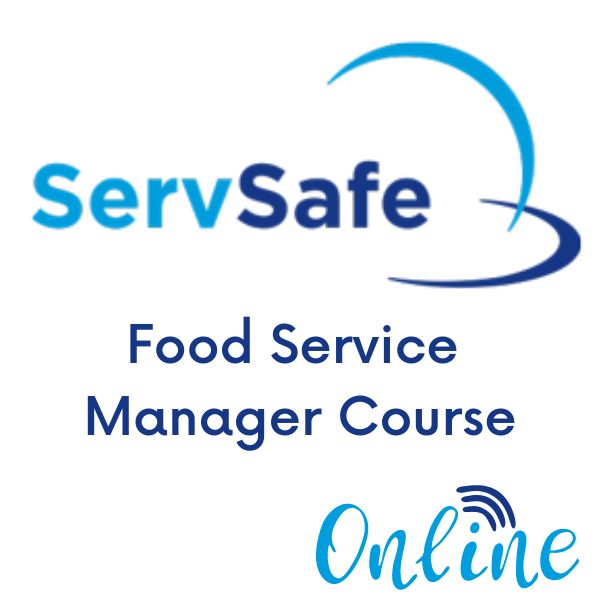How to Improve Your Skills with ServSafe Certifications for Food Safety Excellence
Wiki Article
Comprehensive Food Handlers Educating for Hygiene and Safety
In today's quickly progressing food solution landscape, comprehensive food handlers training has arised as an essential part for guaranteeing hygiene and safety. By instilling crucial techniques related to hand health, food storage, and hygiene, this training not only minimizes the danger of foodborne diseases but also reinforces conformity with regulative criteria.Importance of Food Safety And Security Training

In addition, food safety training assists to guarantee that employees know existing policies and guidelines, which are crucial for keeping operational licenses and staying clear of pricey penalties. Routine training sessions also function as a system for strengthening finest practices, thereby minimizing the likelihood of human mistake, which typically works as a leading reason of food contamination.
Moreover, purchasing food safety and security training can boost a facility's track record, as consumers increasingly prioritize eating experiences that mirror high security standards. Such aggressive procedures not just shield consumers however additionally add to the lasting success of food companies. In summary, detailed food safety training is a vital aspect of food service operations, directly impacting both public wellness and company sustainability.
Secret Principles of Hygiene
Maintaining high requirements of health is vital in any food handling setting to prevent contamination and ensure the safety and security of consumers. The vital principles of health incorporate several important techniques that food trainers need to regularly apply.First, hand hygiene is paramount; food handlers need to wash their hands extensively with soap and water prior to and after managing food, along with after using the restroom or touching any type of potentially polluted surface areas. Tools and surfaces should be consistently cleansed and sanitized to eliminate microorganisms. This includes tools, cutting boards, and countertops, which should be kept in a clean problem.


Proper food storage space is likewise important; raw foods must be saved separately from cooked or ready-to-eat products to stay clear of cross-contamination. servsafe food handler. In addition, maintaining proper temperature controls is critical; perishable products need to be maintained at secure temperatures to hinder bacterial growth
Lastly, individual hygiene can not be forgotten. Food handlers ought to put on tidy garments, use hair restrictions, and prevent functioning when ill. By adhering to these vital principles of hygiene, food trainers can significantly reduce the risk of foodborne health problems and advertise a much safer dining experience for all customers.
Common Foodborne Ailments
Although many foodborne diseases can be protected against through correct health and secure food dealing with methods, they remain a substantial public wellness issue. Foodborne virus can cause a variety of diseases, ranging from moderate stomach distress to severe difficulties and even death.Common foodborne ailments consist of salmonellosis, triggered by Salmonella germs, frequently linked to undercooked poultry and eggs. An additional common illness is listeriosis, linked with unpasteurized milk products and ready-to-eat meats, which can be especially unsafe for immunocompromised individuals and pregnant women. Norovirus, frequently contracted from infected food or surfaces, is recognized for its quick spread and capability to cause outbreaks in common setups.
Escherichia coli (E. coli) infection, notably associated with undercooked hamburger and infected produce, can bring about severe stomach cramps and kidney failure in some cases. Furthermore, Clostridium perfringens, often discovered in large quantities of food that are incorrectly saved, can trigger food poisoning with signs and symptoms showing up shortly after usage.
Understanding these diseases is crucial for food handlers, as understanding can considerably reduce the danger of contamination and safeguard public wellness. Proper education and training are important parts in combating foodborne diseases.
Finest Practices for Food Handling
Effective food taking care of methods are essential in protecting against the spread of foodborne ailments. First of all, appropriate servsafe hand hygiene is essential; food trainers should wash their hands extensively with soap and water before and after handling food, especially raw meat or poultry - servsafe manager. This basic action dramatically decreases the danger of cross-contaminationSecondly, maintaining suitable food storage space temperature levels is crucial. Subject to spoiling things need to be kept at or listed below 40 ° F(4 ° C) to hinder bacterial growth. Furthermore, prepared foods need to be maintained above 140 ° F(60 ° C) up until served.
Third, guaranteeing sanitation of surface areas and tools is essential. On a regular basis sanitize kitchen counters, reducing boards, and utensils, specifically after preparing raw foods. Use separate cutting boards for ready-to-eat and raw foods to better lessen contamination dangers.
In addition, when preparing food, it is necessary to comply with the principle of "first in, initially out" (FIFO) to take care of stock efficiently and lower spoilage. Lastly, constantly adhere and review to food tags for risk-free cooking temperature levels and dealing with instructions. By executing these best techniques, food handlers can considerably boost food safety and security and shield public health.
Implementing a Safety And Security Culture
Creating a safety and security society within a food handling atmosphere is vital for cultivating a dedication to food security among all employee. This society stresses the significance of food safety and security as a shared responsibility, urging employees to prioritize hygiene methods constantly.To carry out a safety society, companies should start by providing detailed training that attends to food handling methods, potential risks, and the value of personal health. Educating sessions ought to be interactive and tailored to the particular roles of personnel, ensuring importance and involvement.
Furthermore, management plays an essential role in developing this culture. Administration ought to model secure methods and communicate the significance of food safety consistently. Recognizing and awarding staff members that copyright security requirements can additionally enhance these behaviors.
Furthermore, open interaction networks must be established, allowing staff to report safety and security concerns without anxiety of repercussion. Routine safety and security audits and feedback sessions can assist recognize locations for improvement and reinforce liability.
Eventually, cultivating a safety society not just enhances conformity with food security guidelines yet likewise protects public health and wellness, promotes staff member spirits, and adds to the total success of the food dealing with establishment.
Conclusion
Finally, comprehensive food trainers training plays a crucial duty in find more information promoting health and safety and security within food solution establishments. By equipping employees with important understanding concerning food security principles, common foodborne health problems, and best practices for taking care of food, such training significantly decreases wellness threats. Fostering a society of security enhances the establishment's reputation and straightens with consumer assumptions for high safety requirements, inevitably adding to public wellness defense and the general success of the food solution industry.In today's rapidly advancing food service landscape, detailed food trainers training has arised as an important component for making sure hygiene and safety.Food safety training is critical for preserving high standards in food handling and preparation, with researches indicating that proper training can decrease foodborne illnesses by up to 30%. In summary, thorough food security training is an essential component of food service procedures, directly influencing both site web public wellness and company sustainability.

Report this wiki page